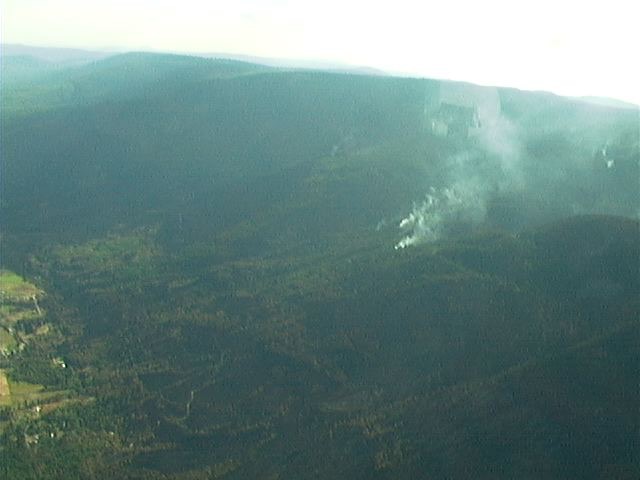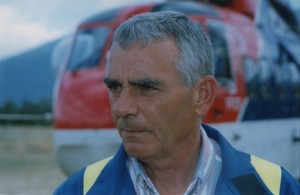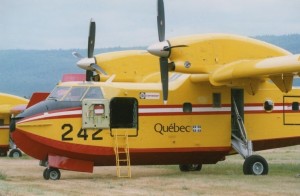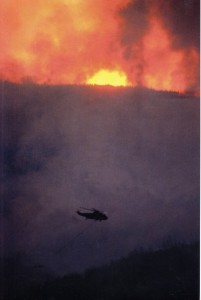Airstrike
The lightning strike that started the Silver Creek Fire was in an isolated area virtually inaccessible by ground. Within a very short time, smoke was spotted from the Queest Forestry Lookout Tower by Pam Oxley and by Resource Officer Wayne Langlois who was a passenger on a reconnaissance flight in the area.
Langlois was the first person over the fire to assess the situation and make an Initial Fire Report. Once air tankers and helicopters were called in, he had the job of coordinating air traffic. Some called him an aerial observation platform. Langlois reported what he saw to the Fire Boss or Incident Commander.
The Bird Dog was also in the air accompanying the Forest Service’s air tankers. He directed the air tankers to the most effective and safe drop locations, supporting the fire plan devised by the Fire Boss. As pilot of the lead aircraft, he coordinated the air assault. The Bird Dog position was held by an experienced fire specialist with knowledge of air attack techniques and ground crew strategies. He worked to keep the fire from spreading, helping the ground crews take control.
The Buffalo CL215 scoops and delivers 5,443 kg of water. Sometimes called a “water bomber” by the public, this air tanker was used for its maneuverability in tight spaces like the Salmon Valley.
In the initial stages of the attack, air tanker pilots dropped 86,145 litres of fire retardant on or near the fire to limit its spread. Unfortunately, the forest floor was covered with fallen beetle-killed trees. The retardant did not reach the ground and the fire was able to spread.
On August 3rd, the situation was complicated by a southern wind and the fire burned vigorously. Two days later, on August 5th, a cold front moved in accompanied by high winds. The fire began to spread at a speed of 100 metres a minute.
“As it blew down the valley, the huge column of convective smoke and ash which billowed from this fire, was blown
over by the wind, into a large arch across the valley. . . pieces of burning debris rained from the smoke cloud. . . nothing could stop immediate ignition of homes and barns. . .
Meanwhile, firefighters had been pulled back from the fire on all fronts in an attempt to limit the loss of life. . . the air attack changed from attacking the fire itself to attempting to lay retardant around the homes in the valley. Flying large aircraft in these conditions with 100 km/h gusts and violent turbulence from this huge fire was nothing less than heroic.”[1]
[1] Silver Creek Fire Review, Public Report No. 39. May 1999, PDF, 7.23 MB
Photo credit in order of appearance:
1. Jake Jacobson, c.1998
2.-4. inc. James Murray, Salmon Arm Observer, c. 1998





